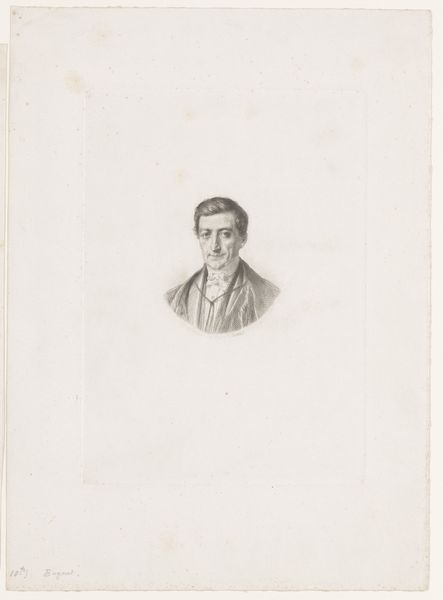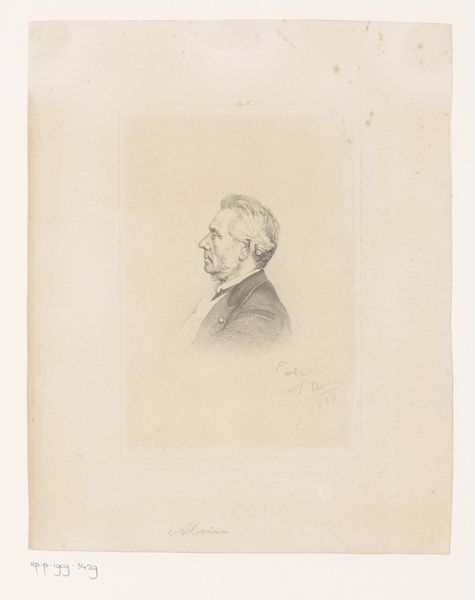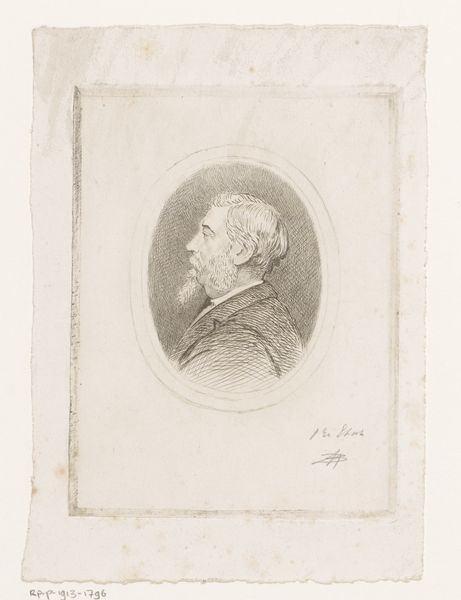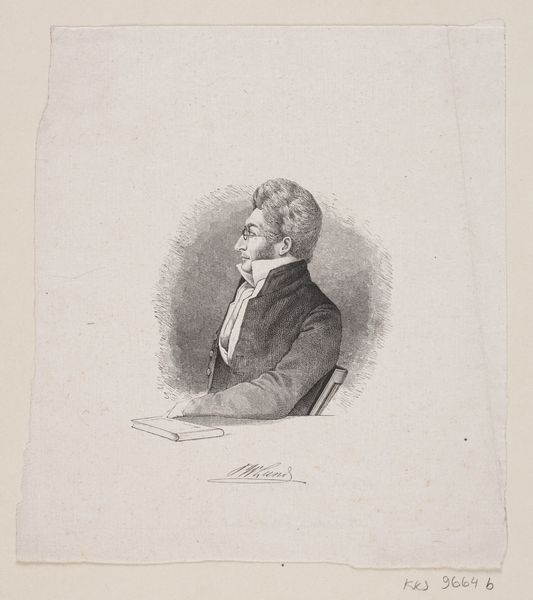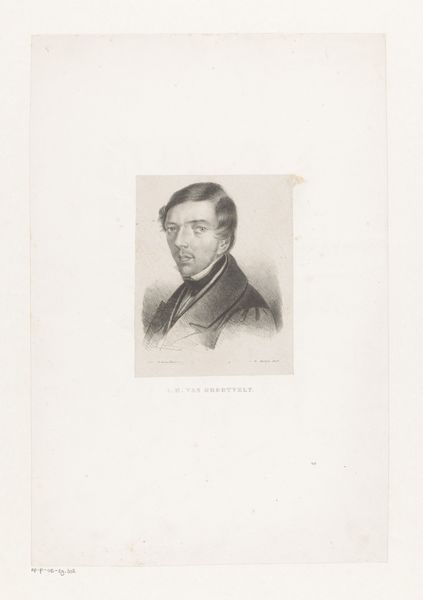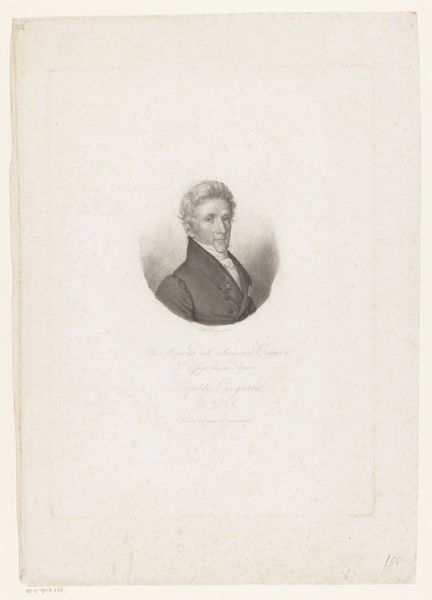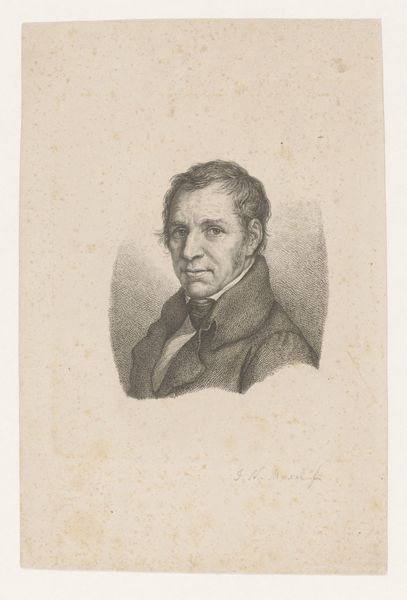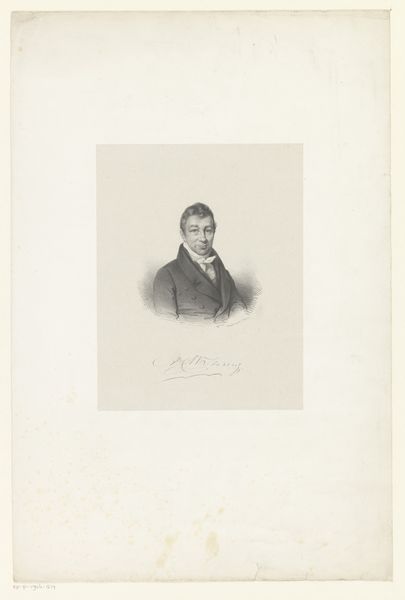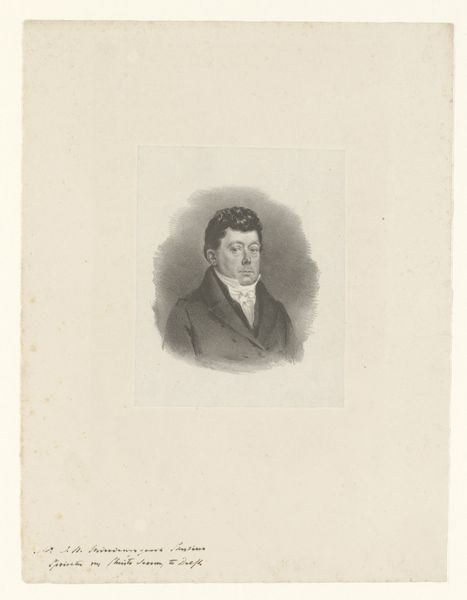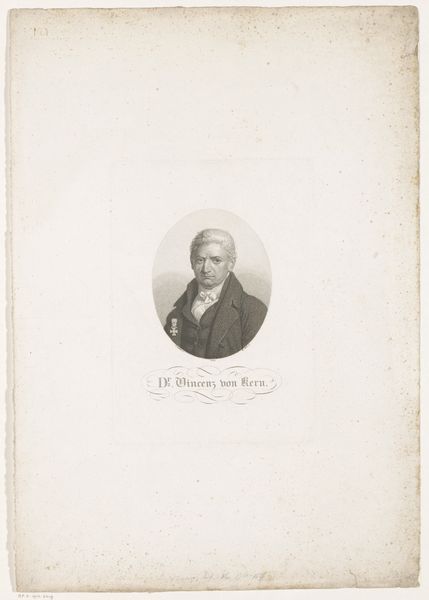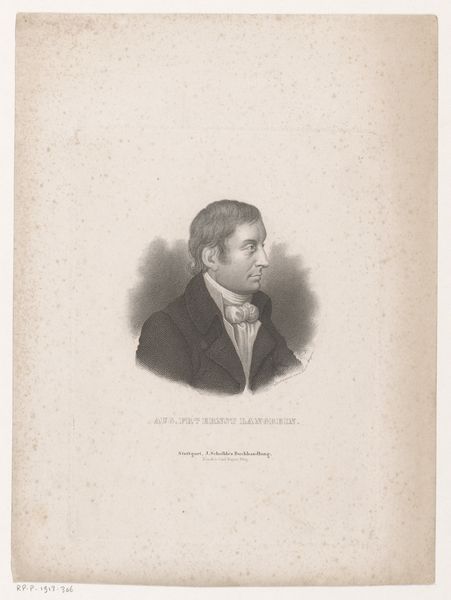
Bust of a man in profile, facing right 1818
0:00
0:00
drawing, print, paper, dry-media, engraving
#
portrait
#
drawing
# print
#
paper
#
dry-media
#
pencil drawing
#
romanticism
#
engraving
Dimensions: Sheet: 14 7/16 × 10 13/16 in. (36.6 × 27.5 cm)
Copyright: Public Domain
Curator: Here we have a portrait dating back to 1818, entitled "Bust of a man in profile, facing right." The artwork resides here at the Metropolitan Museum of Art. Editor: My first impression is one of understated elegance. The delicate lines, the gentle shading – there’s a quiet intensity that really draws you in, especially given it's just a profile. It almost feels like catching someone in a private moment of contemplation. Curator: It certainly captures a sense of introspection. This work is done using dry media—primarily engraving—on paper and depicts the profile of Baron Dominique Vivant Denon. Editor: Dominique Vivant Denon? Ah, now there's a figure to unpack. Director of the Louvre, advisor to Napoleon... his legacy is certainly layered, isn't it? You see hints of that authority and power in the resolute set of his jawline. But I also sense a vulnerability, perhaps the weight of decisions made during tumultuous times? Curator: Exactly! This print gains incredible nuance when viewed through the lens of the post-Revolutionary era in France, and Denon's prominent position during such an influential, yet controversial historical moment. How does one balance personal integrity with political expediency in service to one's nation? It's an important historical reflection, using him as a model. Editor: I think also, looking at this within the context of portraiture as a form of power, the profile view is particularly fascinating. While frontal portraits command direct engagement, profiles offer a more mediated, almost voyeuristic perspective. In terms of artistic access, we're seeing this figure mediated both by technique, style and historical circumstance. What political roles did this engraving play, if any? Curator: I understand this to be an almost romantic portrayal of leadership during unstable social situations, given it leans toward Romanticism as an artistic style. What remains constant, the engraving implicitly asks, is individual character—despite changing governments or ideologies. Editor: It’s a subtle statement about navigating complex power dynamics that clearly still resonates today, especially when reflecting on the relationship between art, politics, and personal identity. So much is being stated through what isn't said directly. Curator: It reminds us of the importance of delving into history in order to better understand and perhaps dismantle cycles that keep repeating. I will remember that. Editor: Indeed, that interplay is something that lingers long after you walk away from this deceptively simple image. Thank you for helping to flesh this work out.
Comments
No comments
Be the first to comment and join the conversation on the ultimate creative platform.
